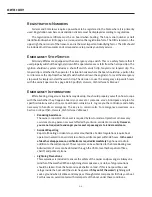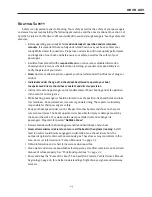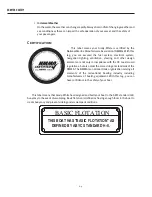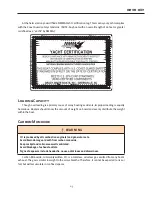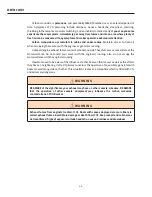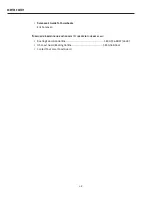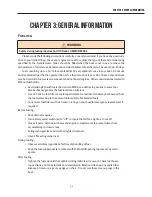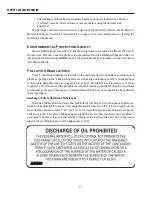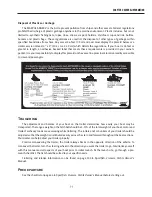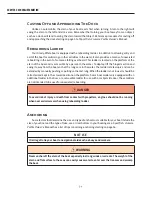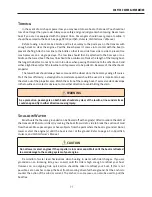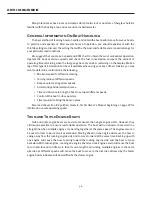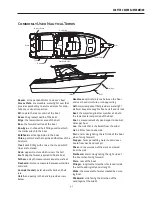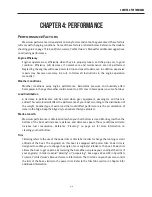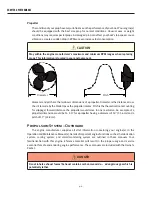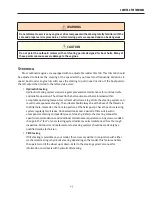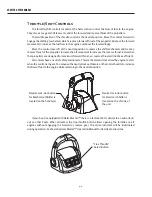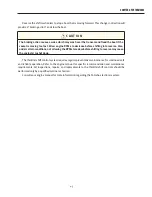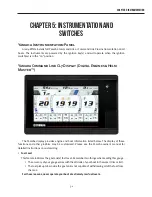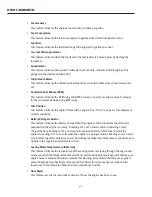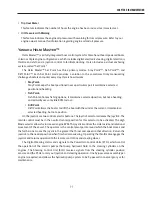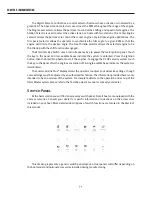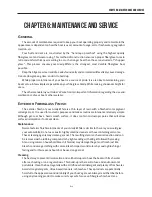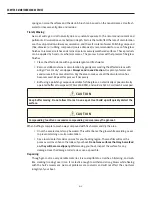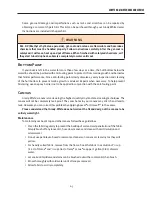
3-6
Chapter 3: General Information
Many inland areas have rocks and stumps which could crack or puncture a fiberglass hull. Be
familiar with the boating area, and use caution in shallow water.
General Information On Boat Handling
The best method of learning how to handle and obtain the best performance from your boat is
to practice and experiment. After several hours of operation, you should experiment with the
throttle settings to discover the setting that will be the most comfortable and economical range for
your particular load conditions.
We suggest that you make a speed and RPM chart to obtain the most economical operation.
Operate the boat at various speeds and check the fuel consumption. Compute the amount of
operating time remaining when the fuel gauge has only one bar remaining on the display. Make a
log of this type of information and have it available when using your boat. Other statistics you may
want to determine could include the following:
• Minimum speed for effective steering.
• Turning radius at different speeds.
• Response to steering at low speeds.
• Accelerating and deceleration rates.
• Time and distance to bring the boat to a stop at different speeds.
• Control of the boat in close quarters.
• Time required to bring the boat on plane.
Also read the section in Sportfish, Cruisers, Yachts Owner’s Manual beginning on page 59 for
information on safe operating speed.
Twin and Triple Engine Boats
Twin and triple engine boats are easier to maneuver than single engine crafts. However, they
still require practice to ensure comfortable operation. The boat will run ahead or backward in a
straight line when multiple engines are working together at the same speed. The engines also can
be used to steer to port as well as starboard. Moving ahead on one engine will cause the bow to
swing away from the running engine side and to move forward at the same time. Backing up with
one engine will cause the bow to swing toward the running engine side and the boat to move
backward. With twin engines, running one engine ahead and one engine astern will cause the boat
to turn end-for-end in little more than its own length and running multiple engines in the same
direction at different speeds will cause the boat to move in the direction dictated by the faster
engine but its influence will be modified by the slower engine.
Summary of Contents for Canyon 306
Page 2: ......
Page 10: ...1 4 Chapter 1 Consumer Information ...
Page 26: ...3 8 Chapter 3 General Information ...
Page 32: ...4 6 Chapter 4 Performance ...
Page 43: ...6 7 Chapter 6 Maintenance and Service ...
Page 44: ...6 8 Chapter 6 Maintenance and Service ...
Page 72: ...9 4 Chapter 9 Warranty ...



